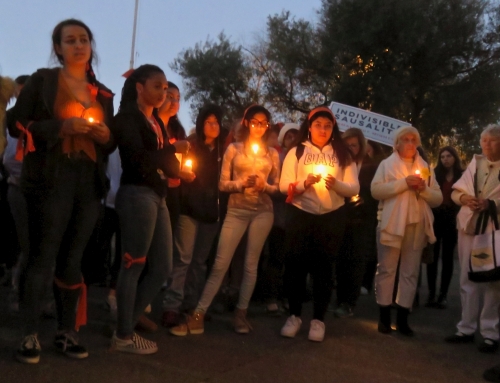I sat at the table in Starbucks across from Tara. From the start, I knew I was not in a welcoming conversation when she refused to order anything though she had chosen the venue. So I dutifully got myself a coffee to legitimize our occupation of a space in this citadel of transient community.
Drifting as a Disastrous Pattern
Tara had come to the church I was pastoring at that time from another about two years or so ago, seeking what she called “meaningful connections” among believers her age. She was in her mid to late 20s, seemingly interested in spiritual growth, and wanting to contribute to the body of believers at our location. A couple of red flags fluttered in my mind when she spoke about being from a Christian family that worshipped at yet another church, and a dating relationship that “ended rather poorly” at one other church in between, but she seemed genuine enough in her desire to come and to stay.
I wondered what those red flags were all about until that day at Starbucks. After all, every reason she offered for her journey down one aisle and up the other in the experience called church seemed plausible. So we embraced her in our community with open arms.
The result was devastating. For the two years that Tara was among us, we discipled her, loved her, helped her to discover her gifts, and gave her the co-leadership of one of our small groups. When she chose to leave, her small group went into turmoil and many drifted off to other churches or left church altogether. One drifter leads many to drift.
A community with members connected and committed to each other functions, in the Apostle Paul words, as a body. And when a body experiences a loss of a member, the grief and pain is often difficult to bear. Perhaps this is the reason many believing communities choose to remain somewhat aloof of new members till they’ve proven themselves over time.
Hello Goodbye
Some of the members of that community had asked me to talk to Tara to gain some perspective on why she’d chosen to leave. I wasn’t quite prepared to at first because I’d been there before – spending energy on chasing down those who choose to leave instead of calling those who are lost. However, I agreed. And so this finds me in Starbucks.
Our conversation was awkward. Tara and I had spent much time over many coffees talking about life. But this conversation was about death. In an open posture of learning, I popped the question, “So why did you decide to leave?” She was immediately defensive, but we managed to grope around long enough to give me some valuable insights to my simple question.
1. Temporary neighbours
“I’ve been here for two years,” Tara said at one significant point in our conversation, “I think it’s time for me to move on to fresh experiences.” The thought was at first offensive, but upon thinking about it, it makes perfect sense. In a generation where upward career mobility is defined by two year commitments, and car leases, cellphone contracts and the like are best under that same time frame, we are likely to be shaped by a the culture of success that considers 2 years as the upper end of career or FOMO stagnation.
The work of bringing people to church and being attractive enough to have them stay at church is one that has set numerous good minds to work. Billy Hornsby in his book The Attractional Church cautions that the church today loses more people that it gains, and that as churches lean heavily on creating models to increase numbers, the inability to create a strong relational environment means that people who come form only a shallow sense of belonging to the local church.
Yet the culture of drifting from church to church persists beyond attractional models. It is the story of a corporate world gone awry, rewarding the creation of temporary neighbours in exchange for upward mobility. As a body of believers, it is necessary to address the prevailing culture of disconnectedness. Since the experience with Tara, I’ve taken the concept of community in Christ and made it a basis for a number of teaching platforms – sermons, studies, discussions – with the effect that the ship started to make its slow but definite turn.
2. Serial Drifting
In a moment of inspiration, I asked Tara about the other churches she’d said goodbye to. Remembering our conversation from when she first came, I was surprised by her answer. “I still have great friends in all of them,” she piped, and cheerfully announced that she would continue to go to a small group at my church while exploring a different church.
I remember well Larry Osborne’s beautiful illustration that the “stickiness” of a church (hence the title of his book Sticky Church) depends on the number and the degree of connectedness that a person has with a community. It brought a smile to my face to imagine what Osborne would say about this serial search for sticky communities without wanting to actually stick around.
I’ve learned since such conversations with the Taras of our church world to make an encouragement not to leave a church (to come to mine) a part of my initial conversation. If hurt, anger, disagreement, boredom, disconnectedness and blame populate our churches as a justification to drift from one community of worship to another, we will find ourselves full of edgy, disconnected people and a church system built on the newest gadgets to entertain a fluid crowd. I think the energies of the church are better used in Great Commission efforts – discipleship, evangelism, instruction, application, leadership development – rather than trying desperately to keep a drifting population.
3. Living Room Discipleship
As our conversation at Starbucks progressed, my sense that Tara’s determination to drift would again go unaddressed by her next community of choice became an uneasy knot in my throat. I ventured a thought with her.
“If you understand a community of believers to be a family,” I ventured, “do you think the family suffers when people decide to leave rather than stay to work at being a stronger family?”
She drew back from the table, and I sensed that our conversation was nearing an end. “You’re making me feel guilty,” she declared. “It’s a matter of fit. When I no longer sense a fit, I move on.”
What immediately entered my mind was people in a house lounging in the living room. They’re comfortable; they appear connected; they look happy with each other. But they’re in a living room. After a good time of connection, they leave. They don’t unpack and tuck in for the long haul. They’re living room disciples.
Discipleship through the lens of Jesus looks quite different. From the dusty streets of Capernaum to the locked doors of the Upper Room, the disciples learned to hang together. Did a fisherman fit with a tax collector, or a Zealot with a doubter? I think we overrate the idea of fit when the call to discipleship is not to love who you are (which is the basis for the concept of “fit”) but to love as Jesus loved. Loving who we are leads to the desire to hang out with people most like us. That leads to segregation, cliques, bigotry, and social exclusivism. As church, we do that by reflex when we let the children take their noise to the basement, and the “young people” their inattentiveness to the “youth service”.
If indeed we are family, then living rooms need to progress to dining rooms, and dining rooms to bedrooms where truly connective discipleship takes place. Discipleship needs to be the intentional Great Commission activity it’s meant to be, and it needs to take place within the body by more than ones considered the “super elite”.
Come Home
As we got up to leave (I think she was ready before I was), I could feel the unsettled rush of caffeine grip me after consuming an extra large Americano without cream or sugar on an empty stomach at 8 in the evening. There are no words to describe the nauseating emptiness of trying to understand why people choose to drift from church to church. It weakens the body of Christ; it exhausts the faithful; it discourages the weak.
I remember recently picking up a book by Patricia Paddey and Karen Stiller called Shifting Stats Shaking the Church. One particularly poignant interview that they recorded was with a woman who had been a refugee, lost in the sea of Canadian society. In her drifting, she found church. I will thus leave the last word to her.
“When I came to this church, I understood what I have been been hearing since I was a child – that the church is a family. The whole week I would be running around, dealing with [everything], and I would really feel like I was in a foreign country. But when I’d get to church, I felt like I was among family. I was home.”






